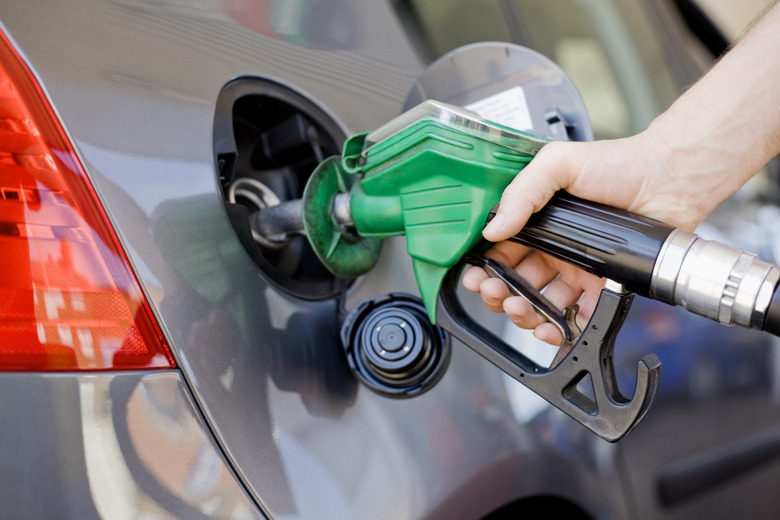Pollution From Gas Stations
Both air pollution and soil pollution are associated with gas filling stations. While air pollution is created by volatile chemicals vaporizing during the gas filling process, soil pollution can be caused by underground pipes or tanks rusting or leaking — slowly releasing contaminants into surrounding area. The constant spilling of gasoline can also cause significant pollution.
Toxic Fumes
Toxic Fumes
When gasoline evaporates, it gives off toxic fumes; a 2011 study found that the air surrounding gas stations can contain much higher concentrations of these cancer-causing vapors than average. Conducted by the Energy and Resources Institute (TERI) in India, the study examined air quality at 40 gas stations in Delhi. The researchers pointed out that this pollution should be particularly concerning for station attendants, who may spend long hours at a station every day.
Soil Pollution
Soil Pollution
Soil surrounding a gas station can become contaminated with gasoline. Gasoline in the soil can be dangerous, as it contains the toxic chemical benzene, which can leach into the water supply. In August 2012, soil near a former Exxon gas station in Wilmington, North Carolina, was found to be contaminated. In October 2011, gasoline was detected in the soil near a Citgo gas station in Shorewood, Wisconsin.
Guarding Against Fumes and Leaks
Guarding Against Fumes and Leaks
Toxic fumes emanating from gas stations can be mitigated by a vapor recovery system. The system is installed at the underground tank's filling point, and uses carbon to absorb any vapors being released. The EPA has outlined systems that could be used to detect any leaks from an underground tank, such as a secondary containment with interstitial monitoring, automatic tank gauging systems and groundwater monitoring. As a temporary system, the EPA recommends combining tank tightness testing with inventory control — or with manual tank gauging, for smaller tanks.
Lead Contamination
Lead Contamination
Phased out by the dawn of the 21st century, leaded gasoline used to be a conventional automobile fuel around the world. As a result, some soils near old or long-standing gas stations could be contaminated with lead. The biggest risk of exposure is through eating or swallowing lead-contaminated soil. Young children are at the greatest risk for this type of exposure, as they often play in dirt and then put their hands and other objects into their mouths. When children are repeatedly exposed to small amounts of lead this way, the metal can build up in their bodies and cause damage.
References
- International Journal of Environmental Studies: Variations in air quality at filling stations, Delhi, India
- India Today: Delhi petrol pumps spew cancerous fumes
- StarNews Online: Soil contaminated around former Exxon station
- EPA: Straight Talk on Tanks: Leak Detection Methods for Petroleum Underground Storage Tanks and Piping
Cite This Article
MLA
Smith, Brett. "Pollution From Gas Stations" sciencing.com, https://www.sciencing.com/pollution-gas-stations-18064/. 24 April 2017.
APA
Smith, Brett. (2017, April 24). Pollution From Gas Stations. sciencing.com. Retrieved from https://www.sciencing.com/pollution-gas-stations-18064/
Chicago
Smith, Brett. Pollution From Gas Stations last modified March 24, 2022. https://www.sciencing.com/pollution-gas-stations-18064/
